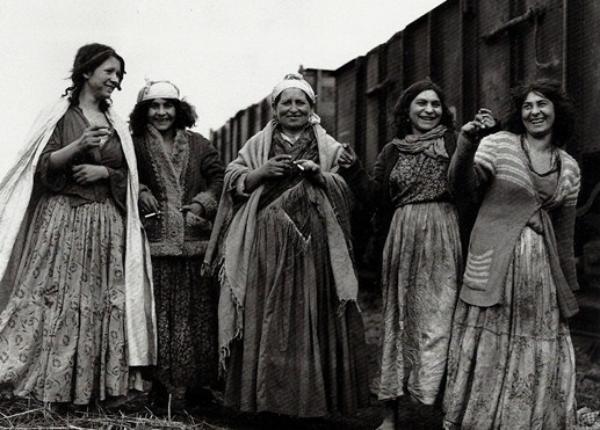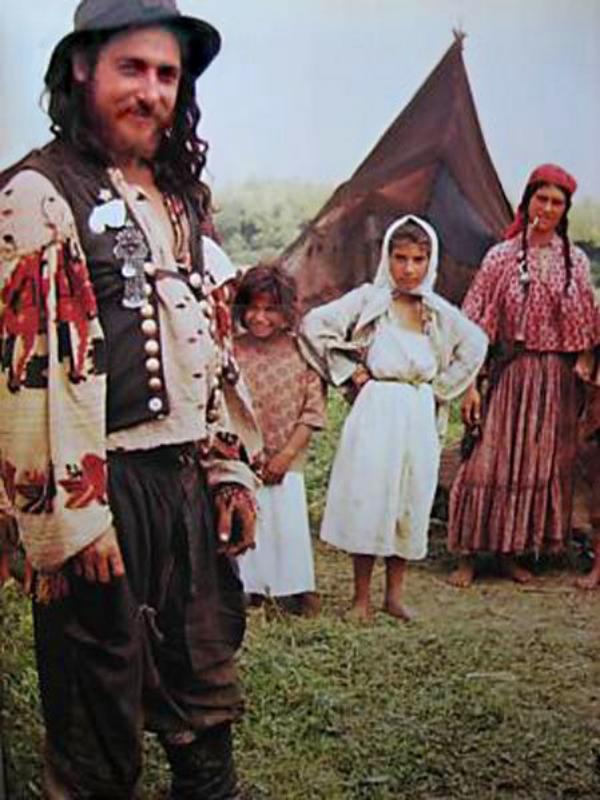
The Dalits of India and the gypsies (Romanis being the politically-correct term) of Europe have more than one thing in common.
Both the groups have faced discrimination and racism since centuries.
But here's the other common factor? A shared ancestry.
'Root'ing for Romanis
Gypsies have been a constant source of fascination to the world. There around 11 million Romanis or gypsies spread across Europe and beyond. Romanis in every country follow different religions, cultures and lifestyles. Assumptions and previous studies have pointed out that Romanis have Indian roots. However, there was no study that could point out the exactly where they originated in India.

Vintage picture of gypsy women in Poland. Photo: Polish Forum
Afterall, India is a melting pot of diverse cultures.
However, one 2012 study using genome-wide sequencing was able to actually trace it down to one single group or single initial founder population.The study, led by Indian and Estonian academics - which was published in the Nature journal - compared DNA samples of European Roma men to that of Indian men to examine the Y chromosome.
Scientists from Centre for Cellular and Molecular Biology, Hyderabad, participated in the study that used 10,000 DNA samples.
According to the Telegraph, they samples were analysed to match "haplogroup H1a1a-M82" a South Asian Y chromosome type, which passes down male bloodlines.The study found that samples from northwest India were the closest match and had the least genetic variation, in comparison to that of samples from Roma men.
When they placed these matches on a genetic map of India, the highest density was in areas dominated by India's "doma" population.
Doma belong to the schedule caste and tribe category, placed in the lower strata of our so called social structure.

Photo: ggvanner.com
The findings of the study
These ancestors of the Roma population left Punjab around 500 CE. Some set off from Gilgit which is now in Pakistan.
They travelled through Central Asia and the MIddle East though they did not mingle much with the local population here. They had lost around 47 per cent of their population by then.
They entered Europe through the Balkan region, more specifically Bulgaria. This was around 1100 CE. From here, the population started to disperse to other regions of Europe.
Genetic patterns showed that Romani populations in Romania, Hungary, Slovakia, Bulgaria and Croatia did not mix too much with the local populations, until recently.
Romani population in Portugal, Spain and Lithuania had mingled more frequently with the locals. However, in recent times, they kept to themselves more.
What we know about the Domas of India
Classified under the Schedule caste and tribe category, Domas are also called Dom, Dombas, Domas. However, they prefer to be called Doms. The word is linked to drumming - a tribute to their musical abilities.
The Dom population is spread across India and bits of Pakistan - especially in the Gilgit region of Pakistan.

An 1860 picture of a man belonging to the Dom community. Photo: Wiki Images
They are historically known to work at cremation places, as weavers, blacksmiths. .
Some things never change
Other than slight physical similarities, Romanis share some other interesting things with Indians.
The Romani language and its many dialects contain numerous Sankrit and Punjabi words. For example words like chor (thief), tussi (you), moo'nh (face), thin (three) hold the same meaning in Romani.
What's more, Romanis in Slovakia celebrate Janmashtami too!


![BJP's Kapil Mishra recreates Shankar Mahadevan’s ‘Breathless’ song to highlight Delhi pollution [WATCH] BJP's Kapil Mishra recreates Shankar Mahadevan’s ‘Breathless’ song to highlight Delhi pollution [WATCH]](https://images.catchnews.com/upload/2022/11/03/kapil-mishra_240884_300x172.png)

![Anupam Kher shares pictures of his toned body on 67th birthday [MUST SEE] Anupam Kher shares pictures of his toned body on 67th birthday [MUST SEE]](https://images.catchnews.com/upload/2022/03/07/Anupam_kher_231145_300x172.jpg)






